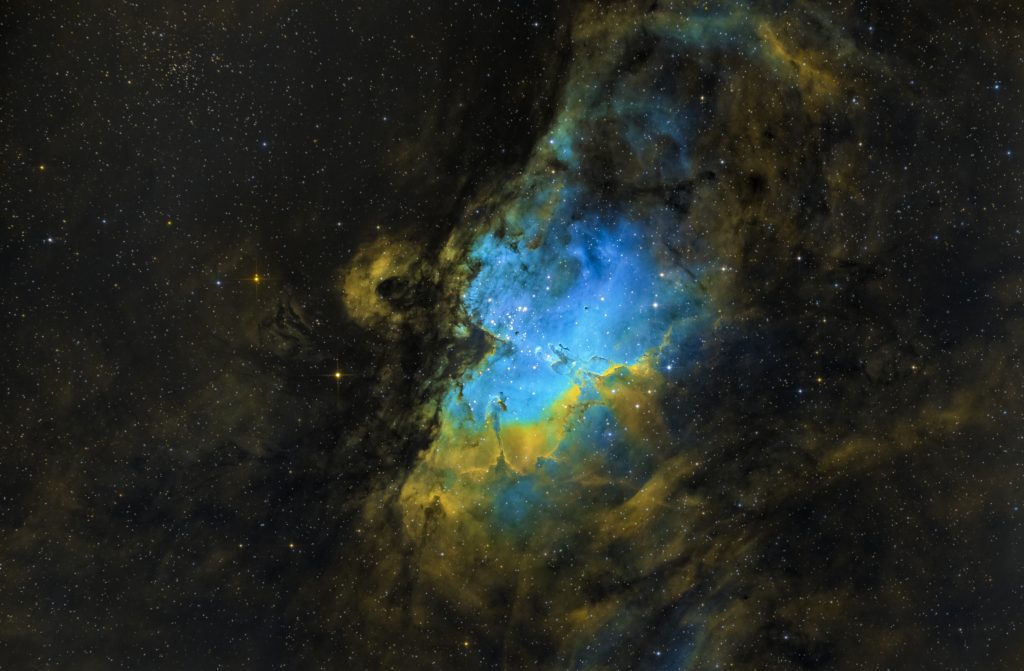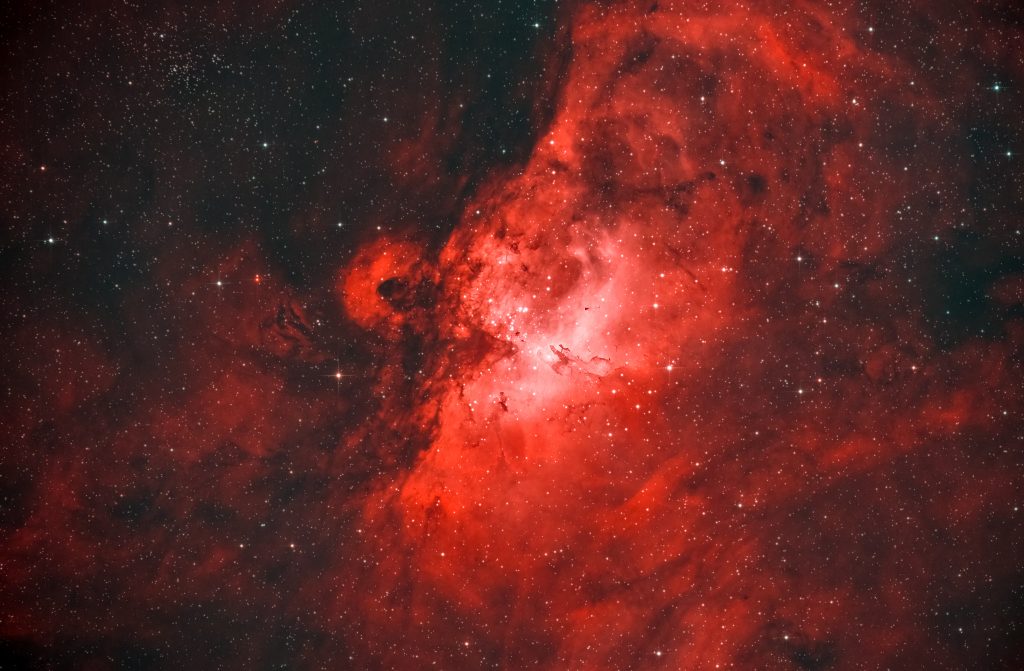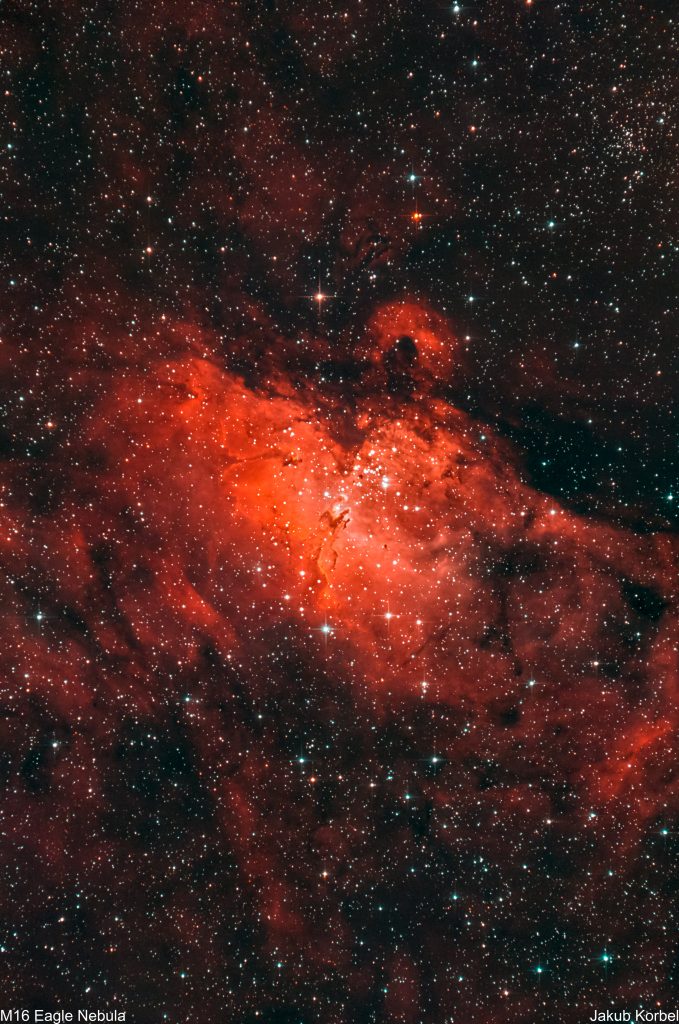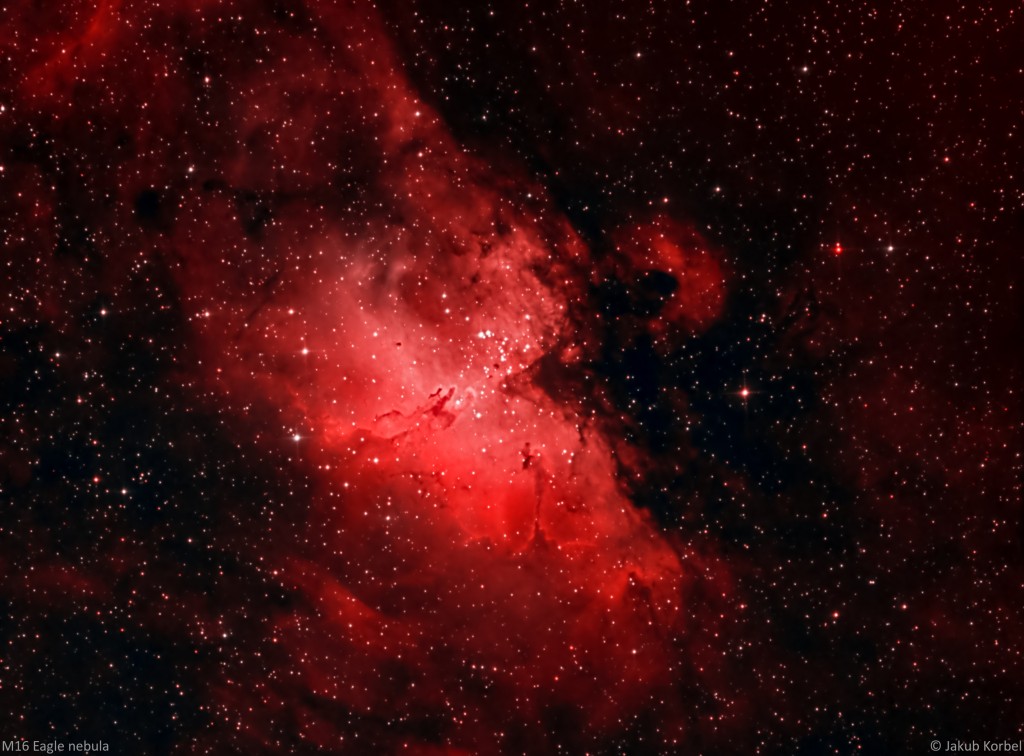I am back home from Namibia, so I took the opportunity of a cloudless, moonless night to take my big Newtonian for a spin. The most prominent summer deep space object is obviously the Eagle nebula, so I pointed the telescope in the constellation Serpens and photographed this DSO whole night long. In total, I captured 64 images, each 5 minutes long.
Here is the “fake” Hubble color palette (SII, Ha, OIII):

And here is bi-color version (Ha, OIII, OIII):

| Telescope | Newton 254/1000 mm |
| Aperture | 254 mm |
| Focal length | 950 mm |
| Mount | Gemini G53f |
| Autoguiding | ZWO 174MM, TS 60/240 mm |
| Camera | ZWO 2600MM @-10°C |
| Corrector | MaxField coma corrector |
| Filters | Antlia Ha, OIII, SII 3 nm |
| Exposure | 64x300s, Gain 100, bin 1x1, |
| Date | 2022-07-03 |


